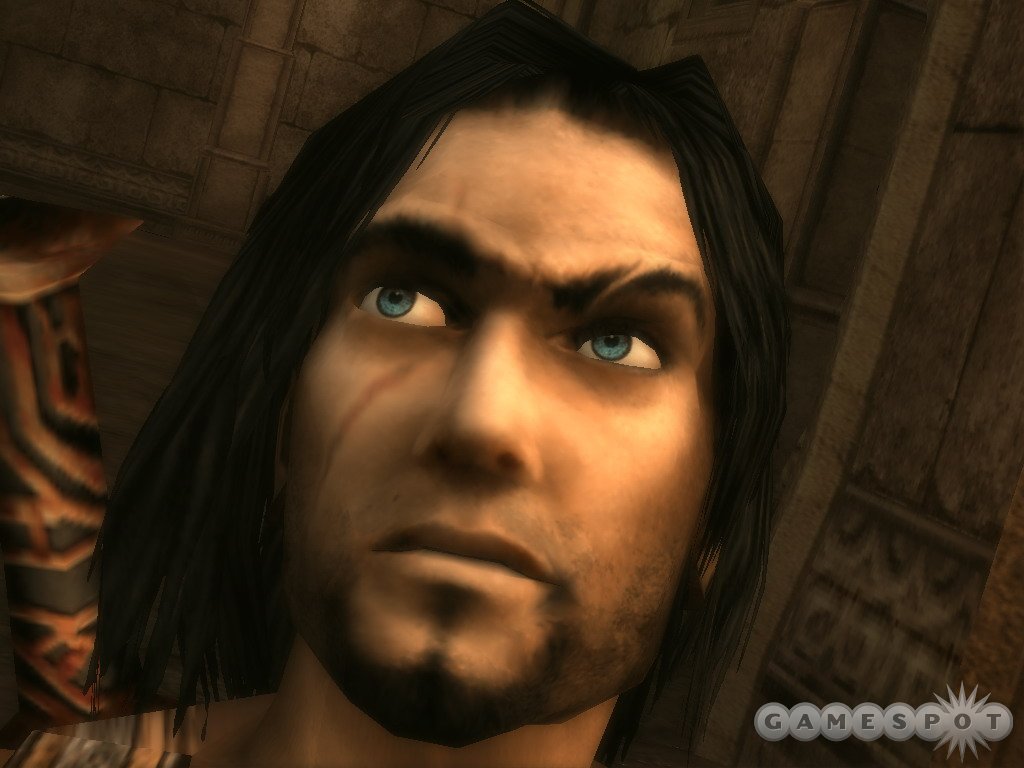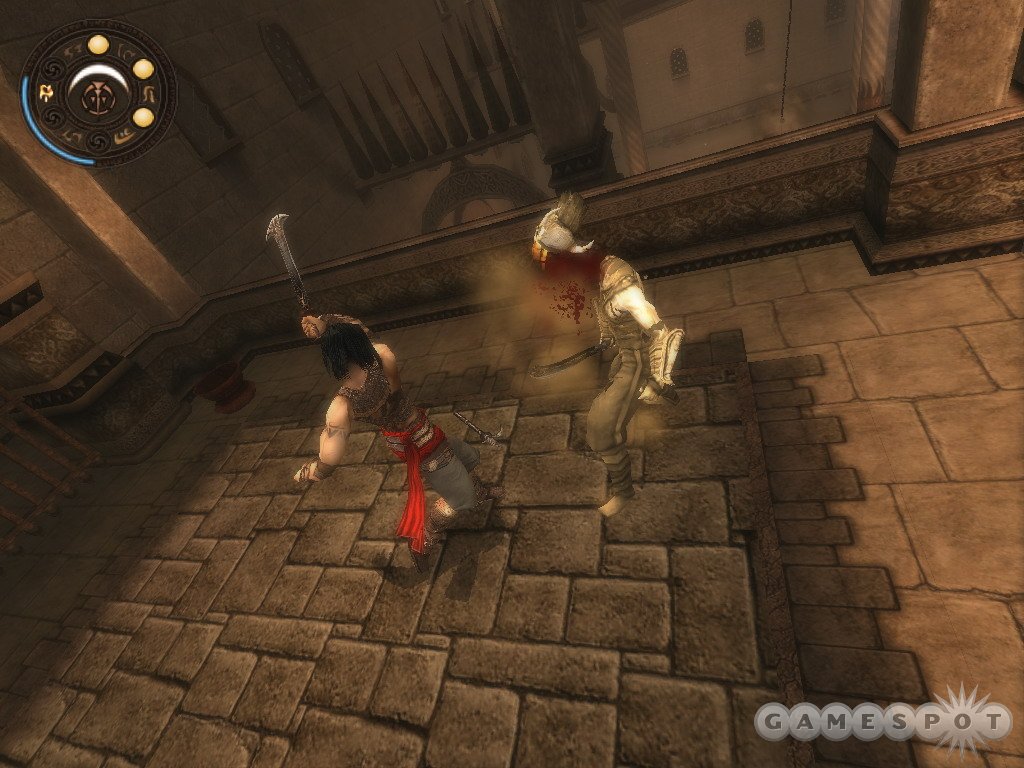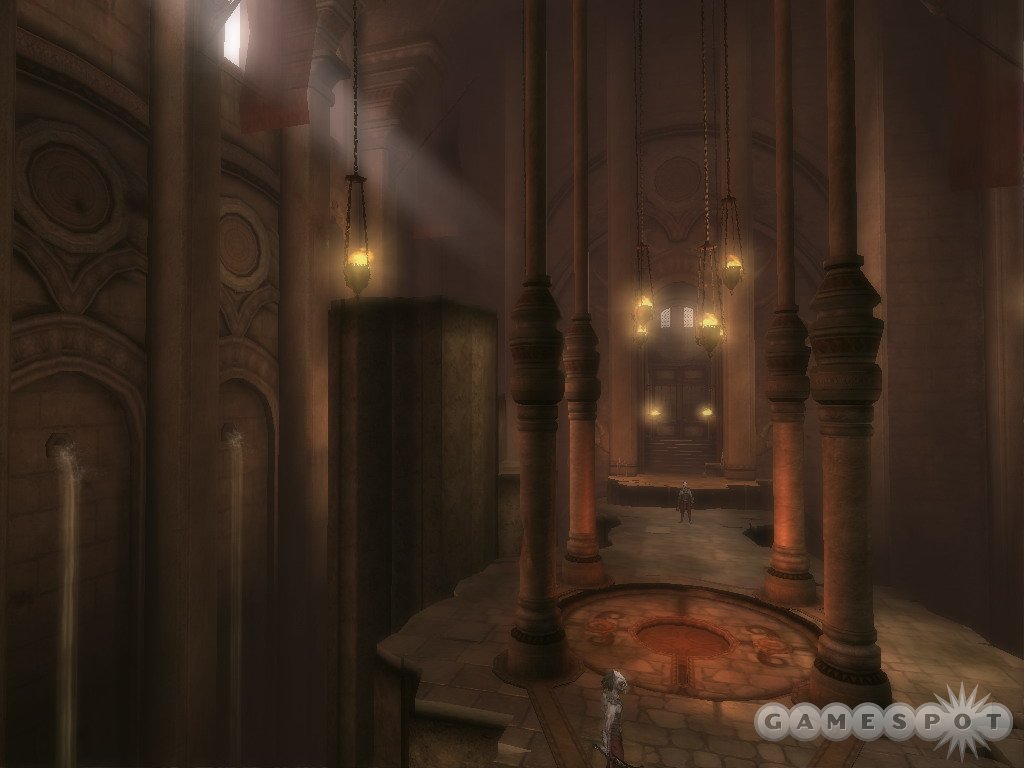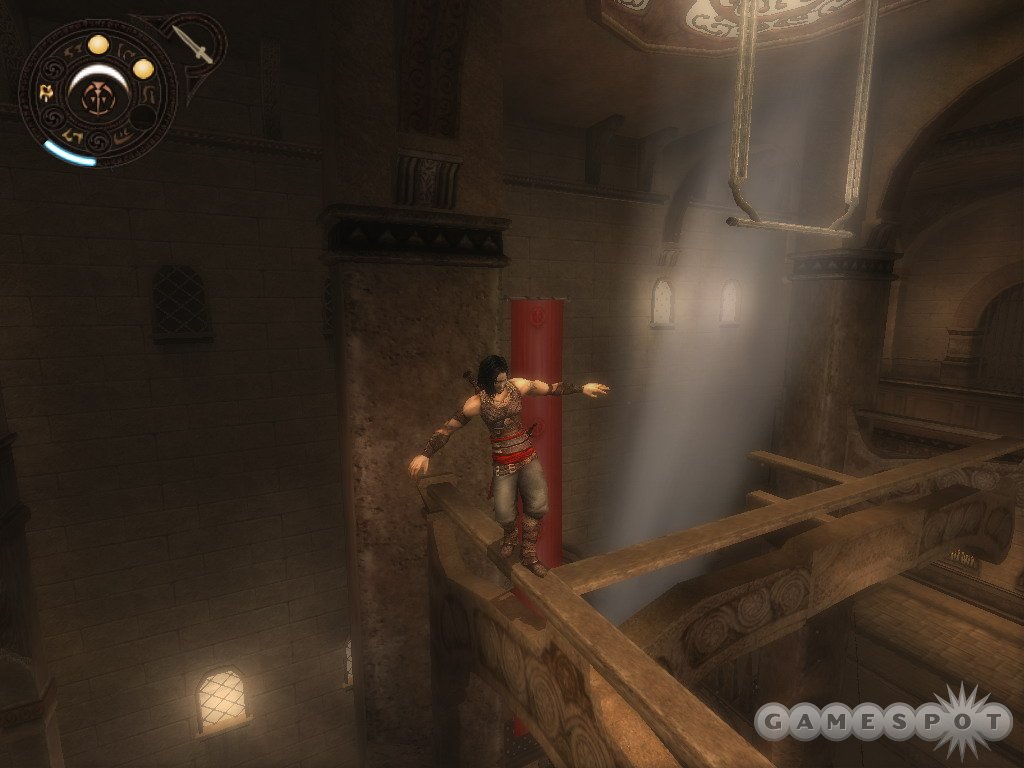When Prince of Persia: The Sands of Time was released last year, it was a very pleasant surprise. The game was an action adventure offering in the truest sense of the term, featuring beautifully detailed levels, environmental puzzles, and, of course, the acrobatic Prince of Persia himself. It was an amazingly faithful modernization of a beloved classic. With the newest iteration in the series, Warrior Within, developer Ubisoft Montreal appears to have addressed the biggest complaints about its forebear, which specifically involved its repetitive combat and short length. Yet while Warrior Within's new combat and satisfyingly long campaign improve on last year's game, the now darker tone falls somewhat flat compared to the storybook atmosphere in The Sands of Time. In addition, technical issues on the Xbox and PS2 platforms also mar the experience a bit. However, make no mistake: Warrior Within is a still a very worthy sequel.

Warrior Within continues the prince's story from last year's game, so, because the prince has unleashed the mystical Sands of Time, he finds himself pursued relentlessly by a menacing time monster called the Dahaka. The Dahaka is a beast that devours everything in its path like a walking black hole, so to escape it for good, the prince decides he must travel to the past to kill the Empress of Time to prevent the creation of the sands entirely. Sound like a conundrum? Well, if you can accept Back to the Future, you shouldn't have any trouble suspending your disbelief for the plot in Warrior Within...although the game is probably meant to be taken more seriously than the Michael J. Fox film. The prince's journey takes him to a ruined fortress on the Island of Time, where you'll find yourself fighting inside the castle, in mysterious caves, and in the outdoor gardens, where some of the game's most attractive level architecture can be found.
Warrior Within borrows a page from the Legend of Zelda: A Link to the Past in that you'll be exploring in the same areas in two different time periods. Special rooms scattered throughout the fortress let you to shift back and forth between the past and the present, and areas of the castle will change accordingly depending on the time period. So, for example, the clockwork tower that had delicate machinery and giant working gears in the past looks run-down and broken in the present day, with tree branches poking through walls and ruined pieces of machinery scattered on the floor. Of course, the path you take to navigate each room also changes depending on the time period you're in.
The new time travel mechanic serves to lengthen the game, but it also adds an element of backtracking that wasn't present in The Sands of Time. This isn't to say that Warrior Within involves as much open-ended wandering as, for example, a Metroid game. For the most part, the game still plays in a very linear way, but in some of the later levels (which feel like they were a bit rushed), it isn't always made clear which direction you should be going in. An in-game map always shows your current location, as well as the time period you should be in, but the lack of detail in the map makes it impossible for you to know exactly how you need to get to your next stop. This can sometimes lead to a bit of frustration as you fumble about, but, for the most part, it isn't a problem...so long as you're paying attention to the clues the game gives you. The good news is that even discounting the time lost from deaths and wandering aimlessly, Warrior Within is a much longer game than The Sands of Time. In fact, it should take the average player around 15 to 20 hours to complete. While the middle of the game feels like it drags a bit, an interesting twist toward the end has a drastic effect on gameplay. This same twist also freshens things up for the home stretch, which ultimately delivers you to the final, rather difficult, boss fight.
Like last year's game, the prince has the ability to rewind time for a few seconds to correct mistakes. This is a clever game conceit that lets you make up a missed jump or a combat blunder without wasting time to reload the game. There are also other time-related abilities, such as speed, which come in handy for both combat and getting through traps. There are additional spell-like abilities that can knock back and damage multiple enemies that surround the prince. All these are limited by sand slots, which can be recharged by defeating enemies in combat or by breaking open jars and other items strewn about various rooms.

The biggest new addition to the game is a deeper combat mechanic. The prince is now capable of dozens of different weapon combos, and these are context sensitive depending on whether you are holding a single weapon or dual-wielding two weapons. With a single weapon in hand, you can grab enemies and throw them. You can even strangle them. Dual-wielding takes away your throw options, but it lets you perform much more powerful weapon combos. What's interesting is that the effect of your moves changes depending on what type of weapon you have in your left hand, which is the prince's less-dominant hand. With a mace in your right hand, you can knock opponents to the ground, while a sword in your left hand lets you to chop enemies in half with certain combos. The weapon in your left hand also degrades with use, so you'll always need to pick up new ones that are dropped by fallen foes. Otherwise, you can choose to throw your secondary weapon at enemies in attempts to impale or behead them. You can, of course, still vault off of enemies and walls for more-powerful slashing attacks, and a new pole-swinging attack has been added. There's also plenty of blood and gore in Warrior Within to further spice things up. As a result, beheadings and halved bodies are par for the course once you get used to the better fighting moves.
With all these new moves available, you can imagine that there's a lot more combat in Warrior Within than in The Sands of Time. It's also quite a bit more difficult in spots. Enemies will come at you several more at a time, so you'll need to become proficient with your moves to survive. Eventually, though, you'll find that you can get through the game more efficiently when you quickly end battles by throwing opponents off of high ledges rather than laboriously finishing them off with your weapons. There are a few boss fights in the game, but, unfortunately, quite a bit of recycling has been employed, so these confrontations aren't as memorable as they could have been. What's more, most of the high-level weapon combos are all but useless against bosses, because these combos tend to get blocked. You'll end up relying mostly on dodging and the simplest of combos to steadily winnow health away from bosses.

Despite the revamped combat, the strength of Warrior Within, as in the last game, lies in its environmental puzzles. As the prince, you'll need to rely on your vast array of acrobatic moves to navigate your way through many cleverly designed rooms and traps. You can still jump, wall run, climb, mantle, swing, and vault your way from ledge to ledge and from branch to branch. You can also now make swashbuckler-style controlled falls by sinking your sword into wall tapestries and then sliding straight down as you slice through them to slow your descents. Completing the game's fiendish puzzles and navigating your way through each room tends to be extremely fun and satisfying, and it's made all the more enjoyable by the well-animated moves of the prince and the beautifully designed levels. For the most part, the rooms you go through look quite natural and do not appear as big Rube Goldberg apparatuses. This natural-looking level architecture contributes greatly toward successfully immersing you in the game's world.
The developer has even found a way to add yet more intensity to the trap-and-hazard-laden rooms of Warrior Within. Several times throughout the game, you'll meet up with the mystical Dahaka. Each of these meetings kicks off an intense chase where you must navigate several sets of hazards quickly and without hesitation, lest the Dahaka catch you. The Dahaka sequences offer a nice change of pace, but our only complaint is that the camera angles used during these scenes seem to have been picked for cinematic effect rather than efficacy of control. Consequently, repeating a chase scene a few extra times due to less-than-ideal camera angles can be frustrating.
The biggest disappointment with Warrior Within, though, actually has nothing to do with its technical gameplay. With the new emphasis on combat, which has been spiced up with added blood and gore (and an M rating), the game has taken on a much darker tone. The new prince in Warrior Within is no longer the dignified, self-deprecating nobleman he was in The Sands of Time. Instead, he comes off as an arrogant brute who yells out conceited taunts during combat, such as "You should be honored to die by my sword!" and "Why do you even bother?" While the new attitude could be explained away by his desperation, it all serves to make the prince a much-less-likable character. Add in the soundtrack, which has some bass-heavy, heavy metal influences, and the wistful fairy tale style of The Sands of Time has given way to a game that feels like it's trying a little too hard to be edgy.
Some technical flaws in the game also mar the experience somewhat. In certain cutscenes, for example, the audio lags behind the lip synching and subtitles. This is a minor disappointment, because the sound effects in the game, aside from some ham-handed voice acting from the prince, are excellent and impactful. On the graphics front, the prerendered cutscenes stutter noticeably from time to time. There aren't too many of these types of movies, though, so they don't detract too much from what is a very beautiful-looking game overall.

As far as the interface goes, the developer has done a good job of making the game playable with a mouse and keyboard. So with a bit of practice, you'll be able to successfully pull off all the prince's acrobatic moves and combat combos. However, the game is still best played with a proper controller, if only for the added precision of an analog stick.
Prince of Persia: Warrior Within is an excellent sequel to a game that caught many by surprise last year. Those who enjoy navigating through beautifully designed levels, complete with clever puzzles and traps, will definitely get their fill of them here. Moreover, the combat has improved greatly, although it's still not the principle strength of the game. However, those who primarily enjoyed last year's The Sands of Time for its original charm and subtle character development may not find quite what they're looking for in this sequel. But even with this caveat, Prince of Persia: Warrior Within is easy to recommend for any action adventure fan, and its lengthier campaign should keep players busy for a lot longer this time around.